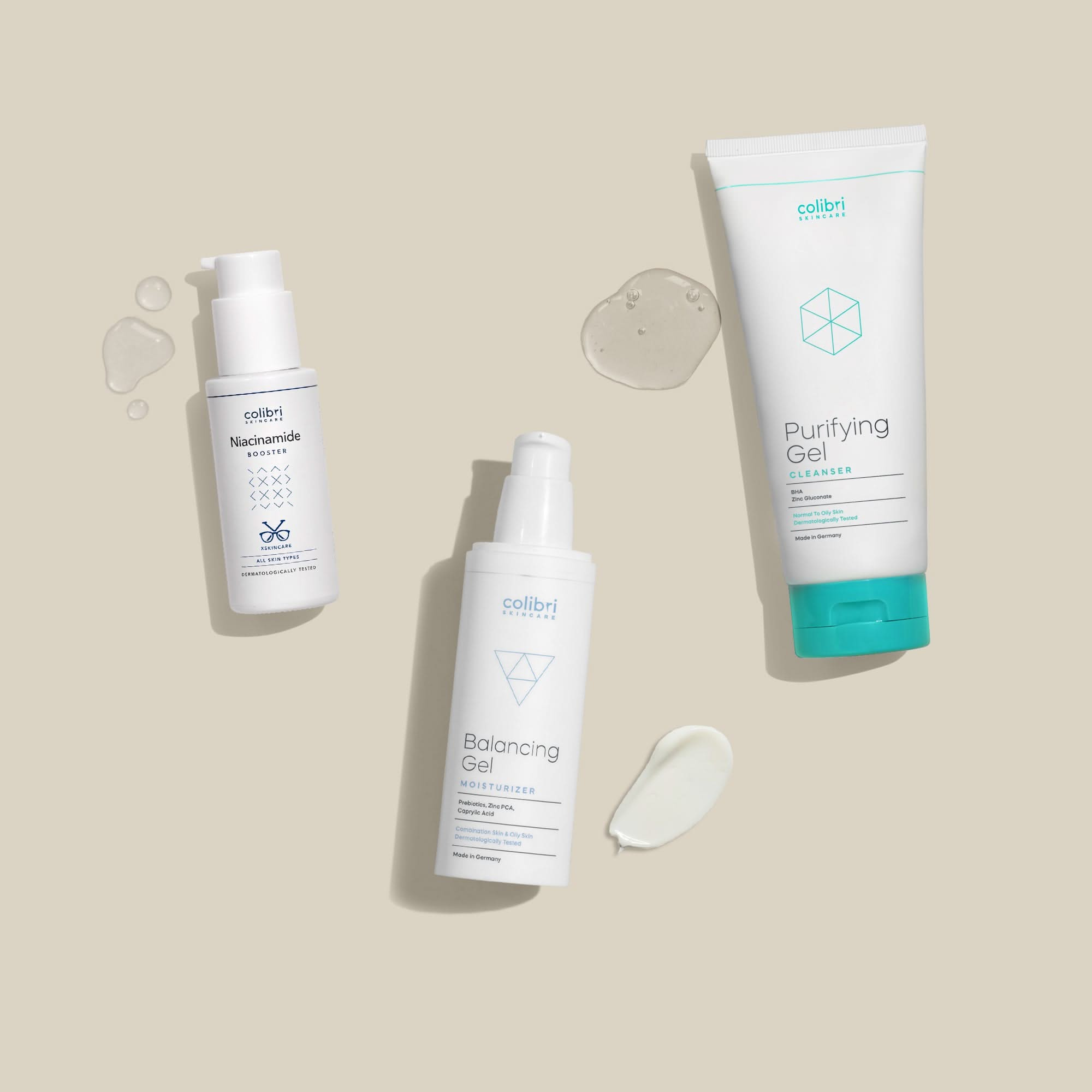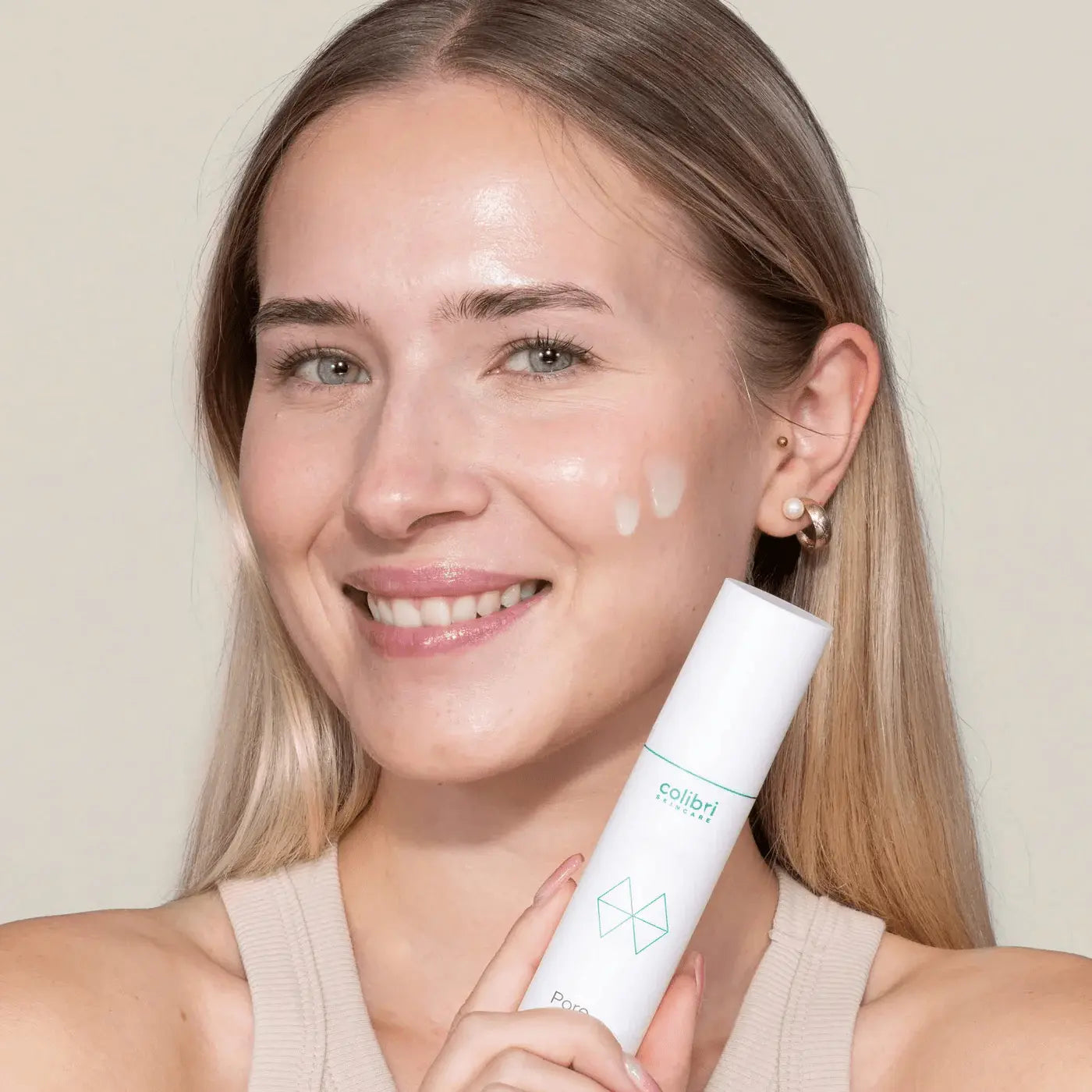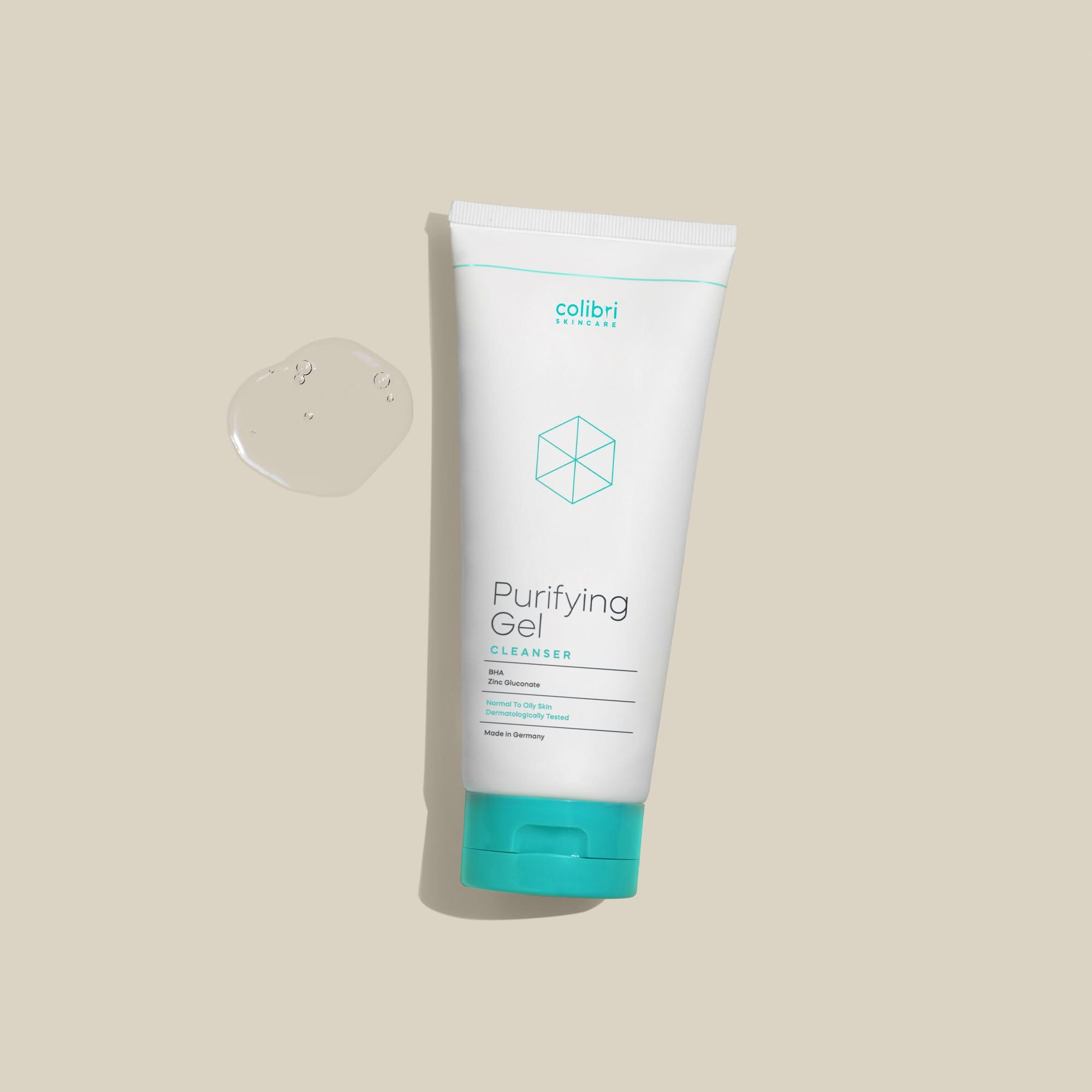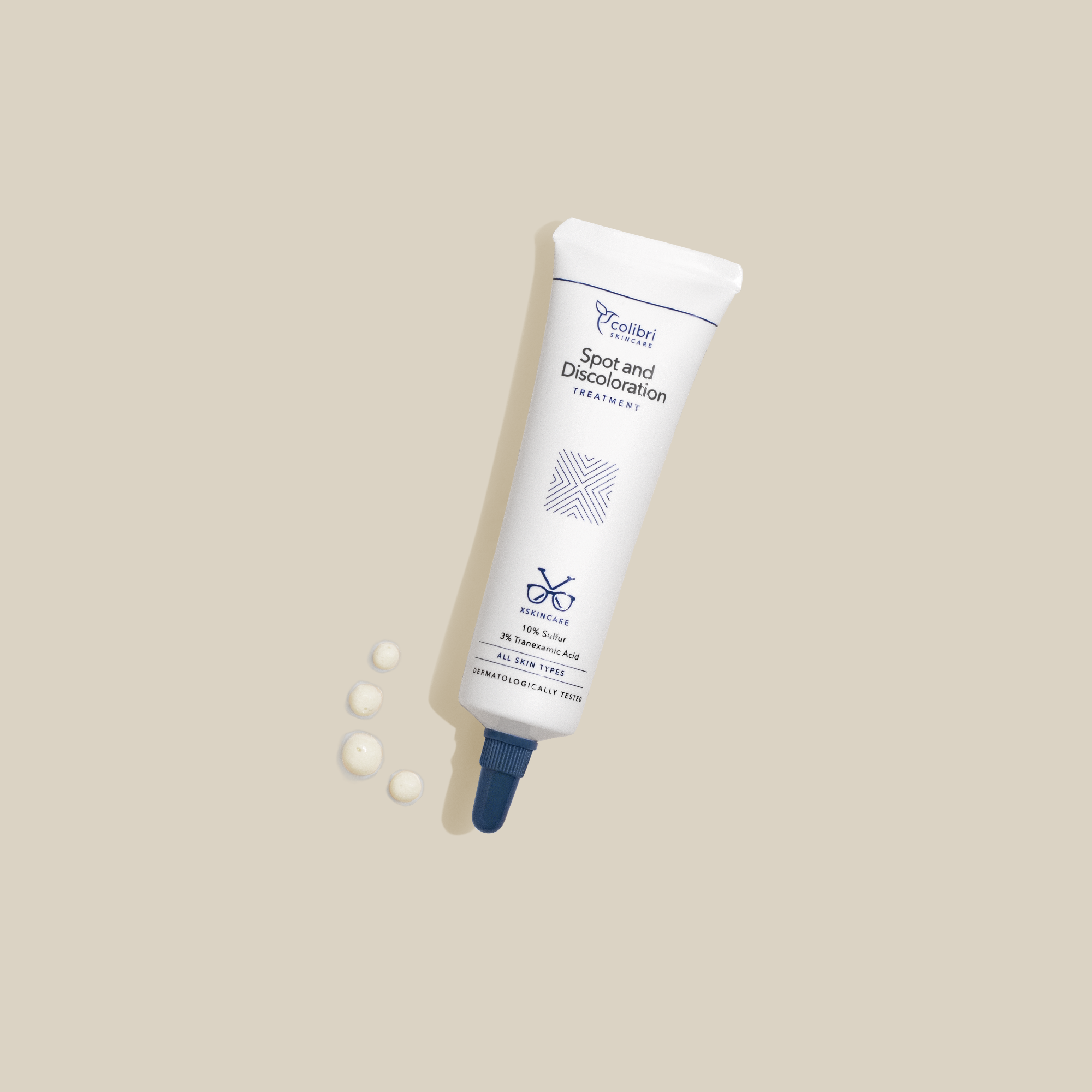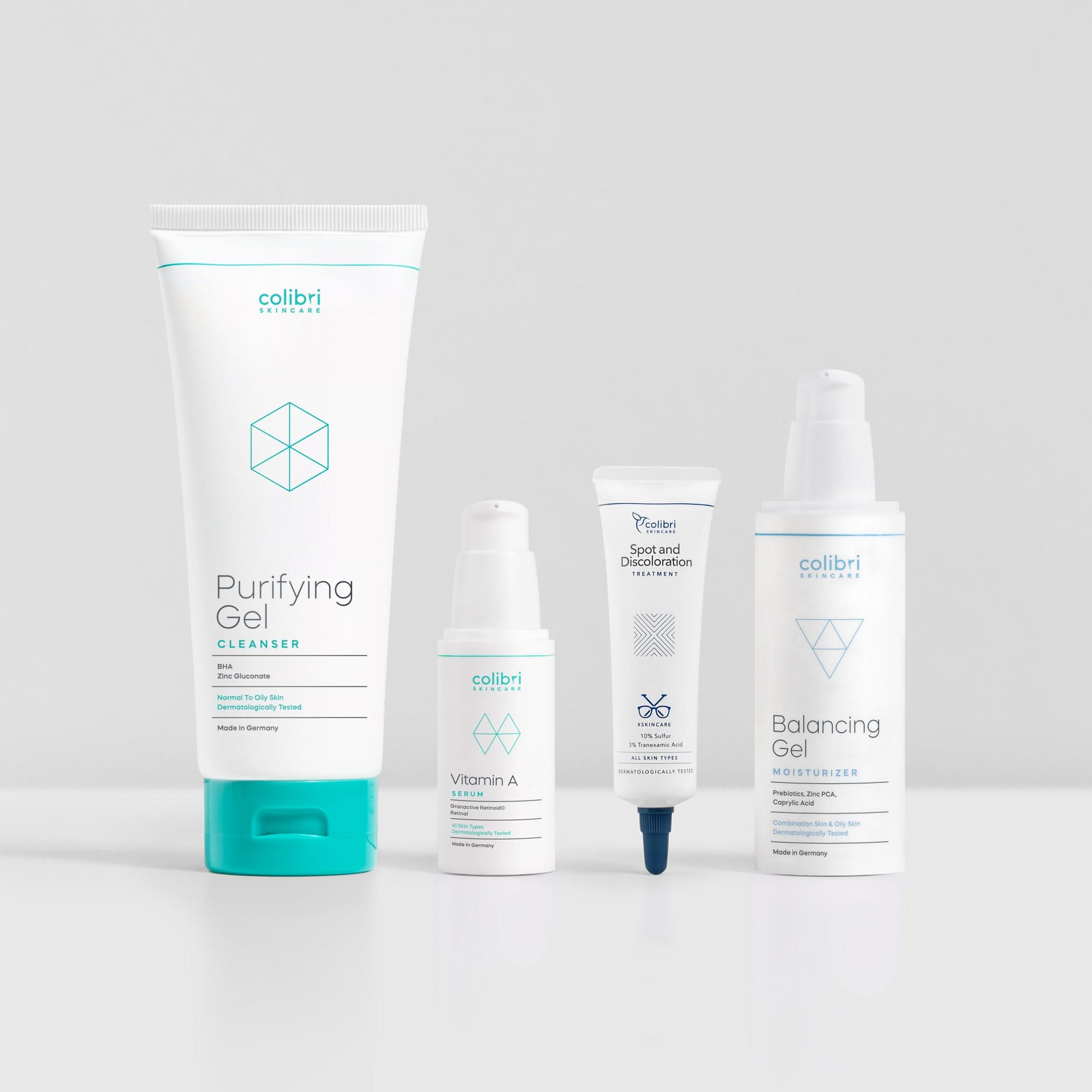5 care steps for acne-prone skin
1. Cleansing: A thorough yet gentle cleanse is crucial for removing excess sebum, dirt, and dead skin cells.
2. Chemical Peels: Products containing salicylic acid or glycolic acid help remove dead skin cells and unclog pores, significantly improving skin texture.
3. Moisturizing: Acne-prone skin also needs hydration. Choose non-comedogenic, lightweight formulations that won’t clog pores.
4. Retinoids: These promote cell turnover, regulate sebum production, and reduce inflammation, leading to clearer skin that is more resilient against new impurities.
5. Sunscreen: This step protects against external influences, reduces scarring, and minimizes inflammation and skin damage caused by increased sensitivity to light from peeling agents.
Popular ingredients for acne-prone skin
Choosing the right ingredients can help reduce inflammation, clear pores, and improve skin texture in the long term. The following ingredients have proven particularly effective for acne-prone skin: salicylic acid (BHA), retinoids, niacinamide, and azelaic acid. Besides selecting the right ingredients, it is equally important to know which substances can exacerbate your skin condition. Comedogenic ingredients, alcohol-based toners, aggressive peels, and oily creams should be avoided to reduce the risk of breakouts.
Temporary impurities or acne
Your skin type plays a crucial role in susceptibility to acne and other impurities. Oily skin has increased sebum production, which can lead to clogged pores and, consequently, acne. Dry skin is less prone to acne but can be susceptible to other impurities. Combination skin can be prone to both, as it may have oily, dry, and balanced areas. While temporary impurities occur sporadically and are less intense, acne is recurrent and persistent. The symptoms are often painful, long-lasting, and leave marks in the form of scars and post-acne spots.







